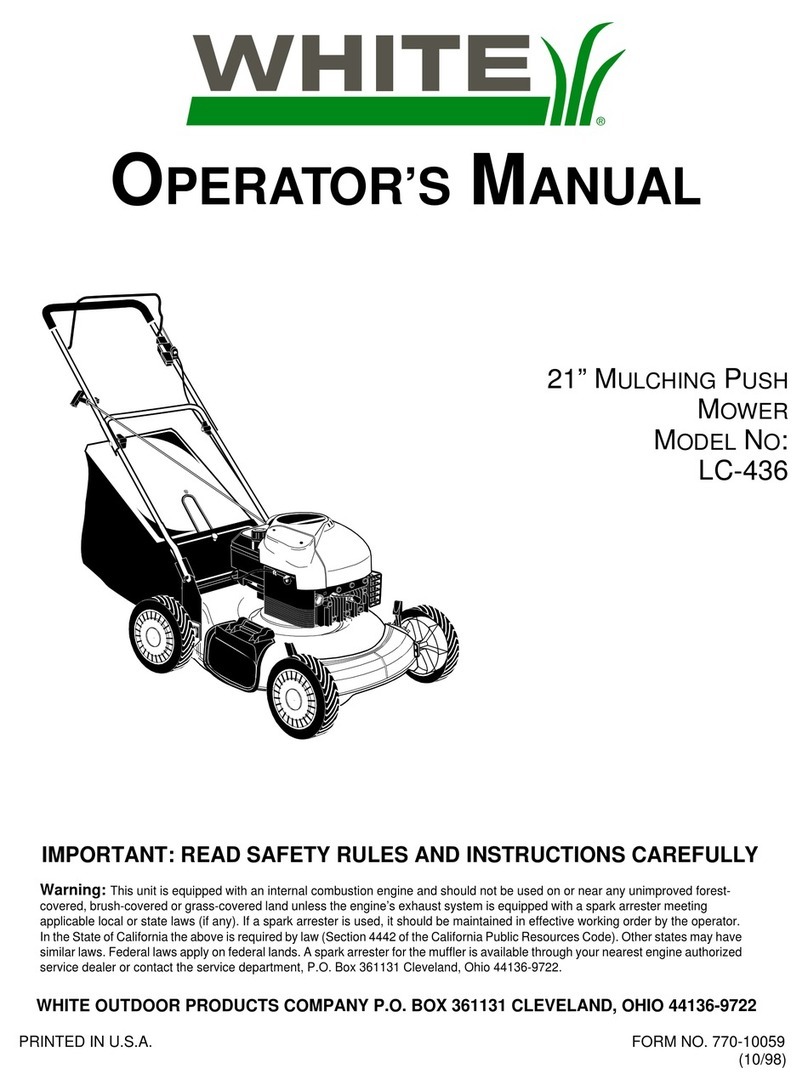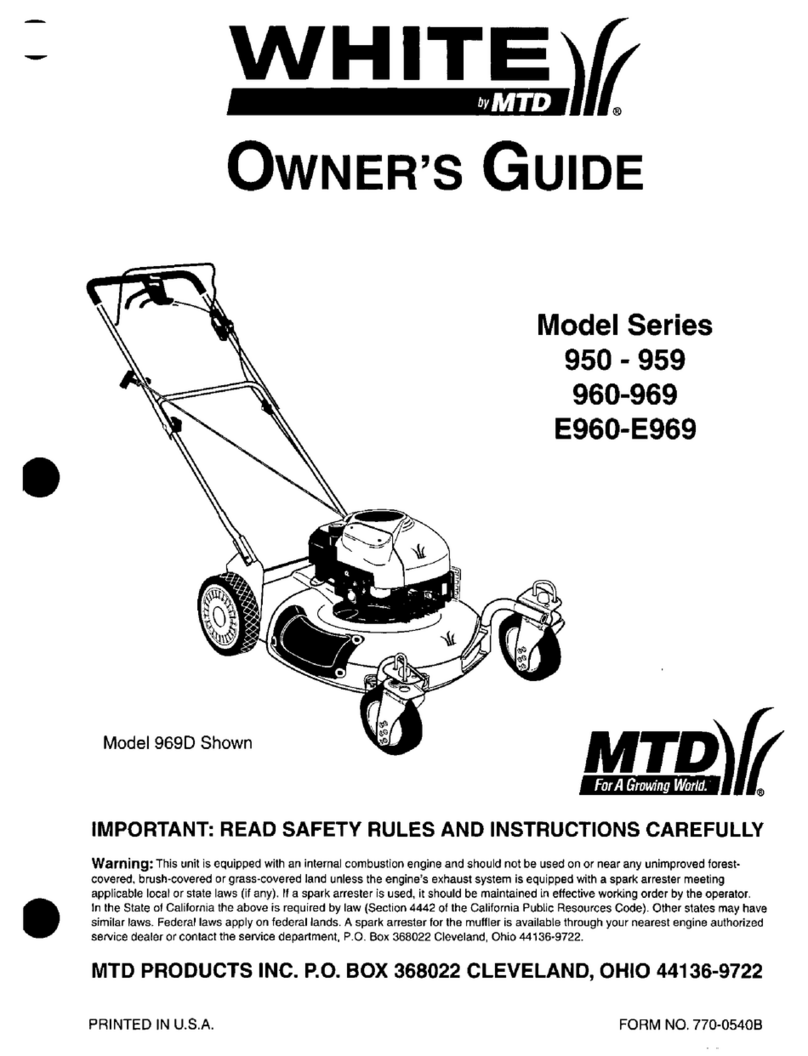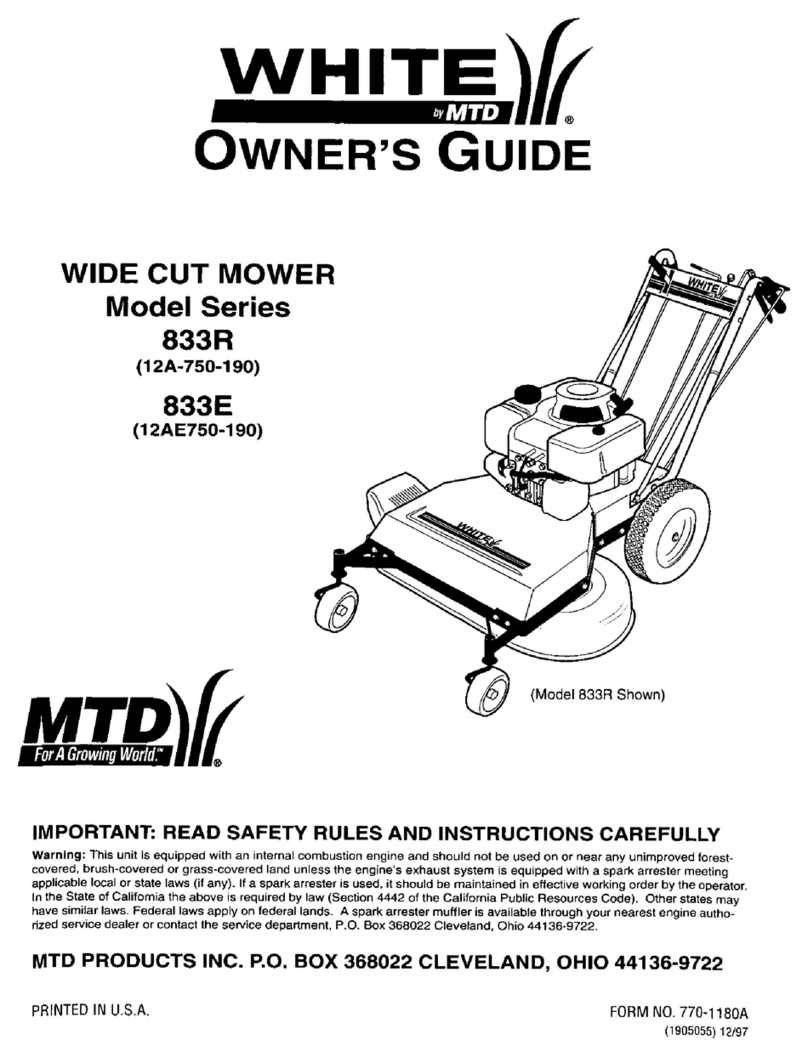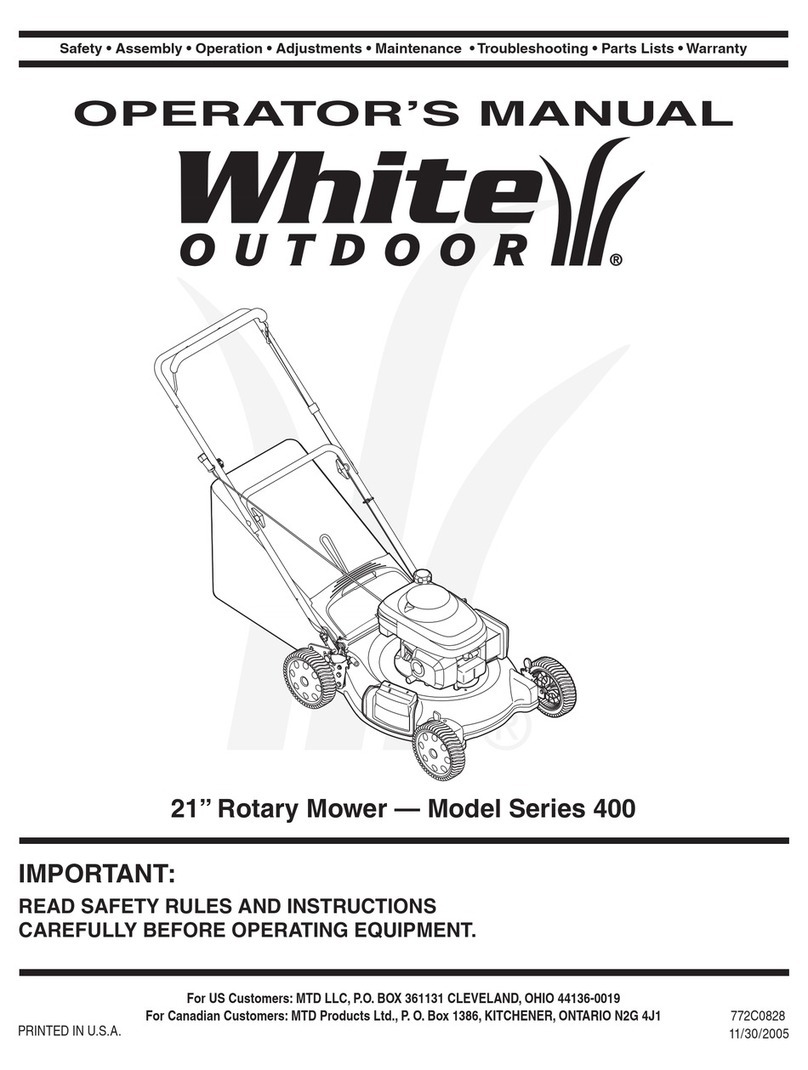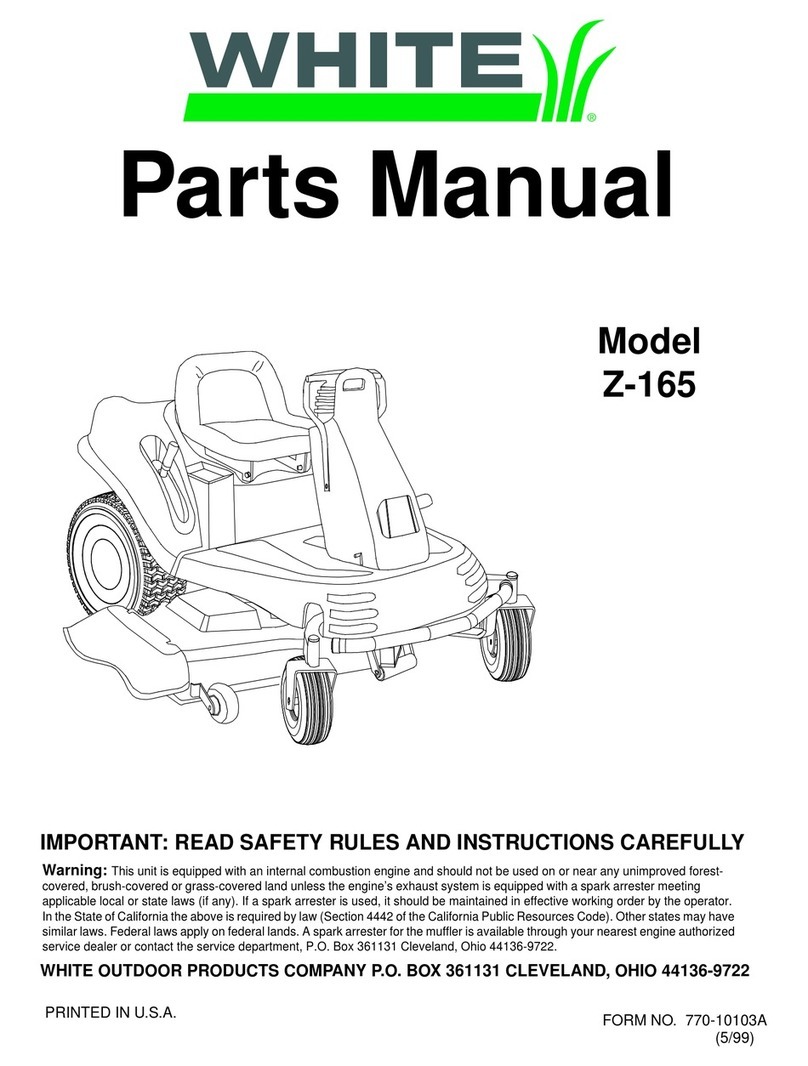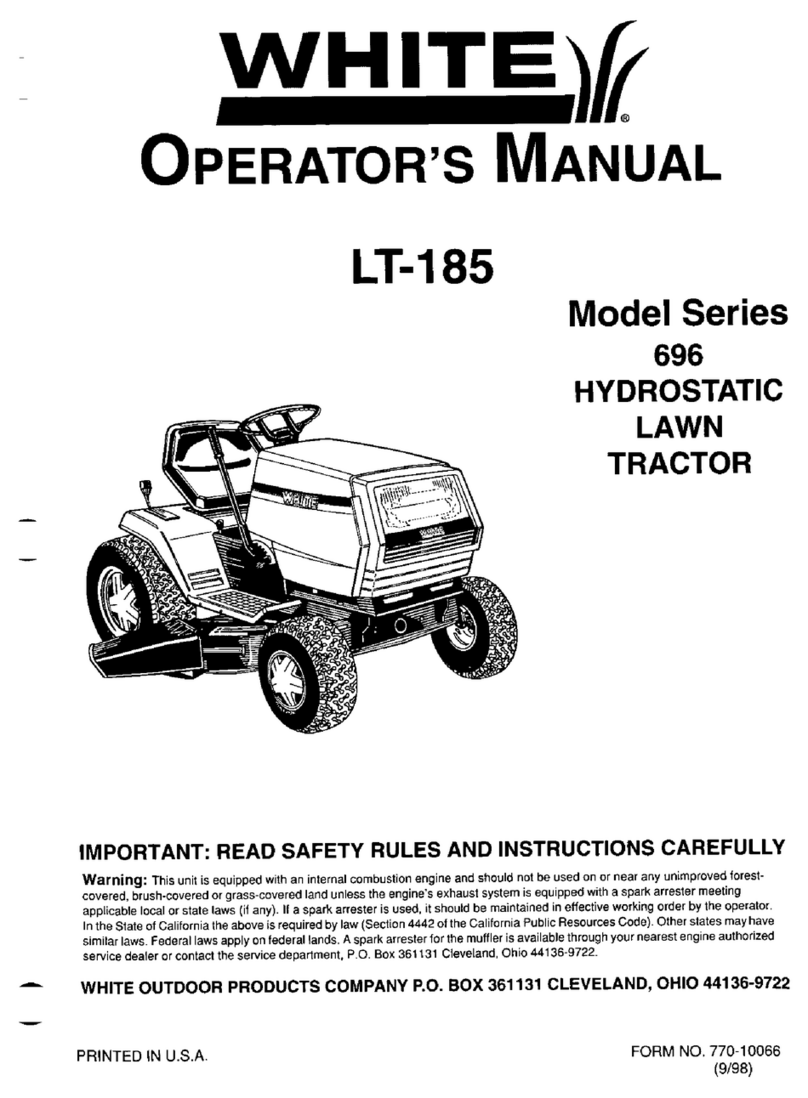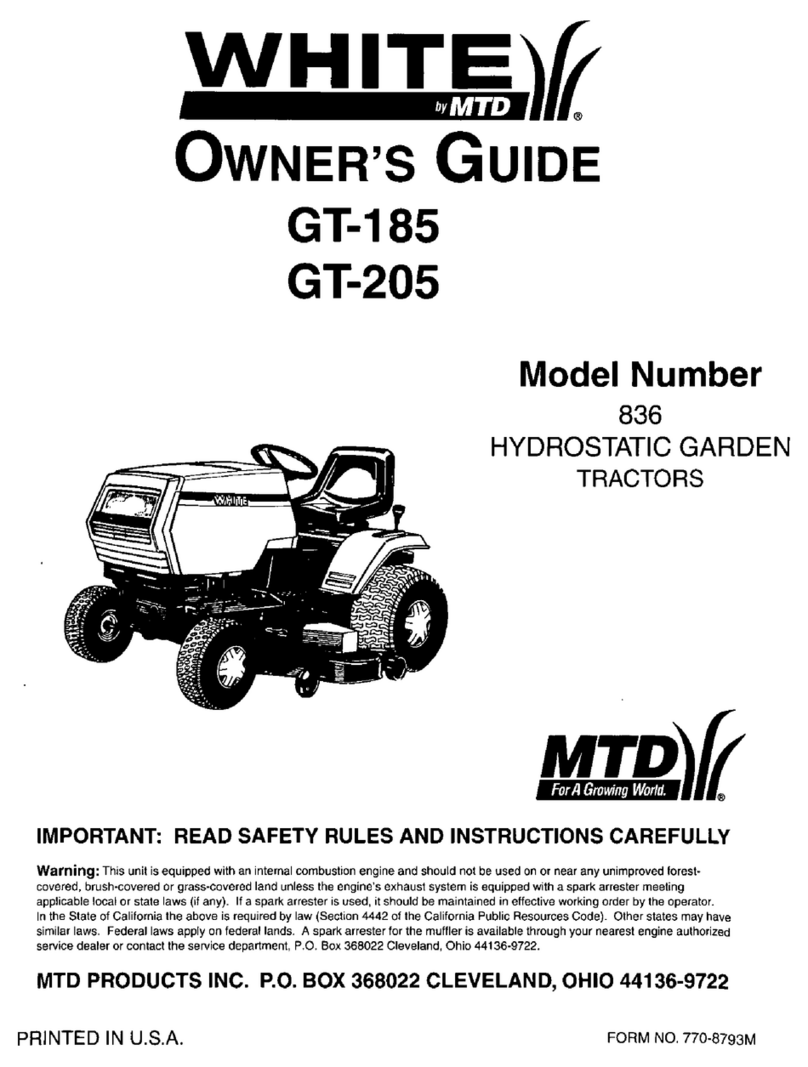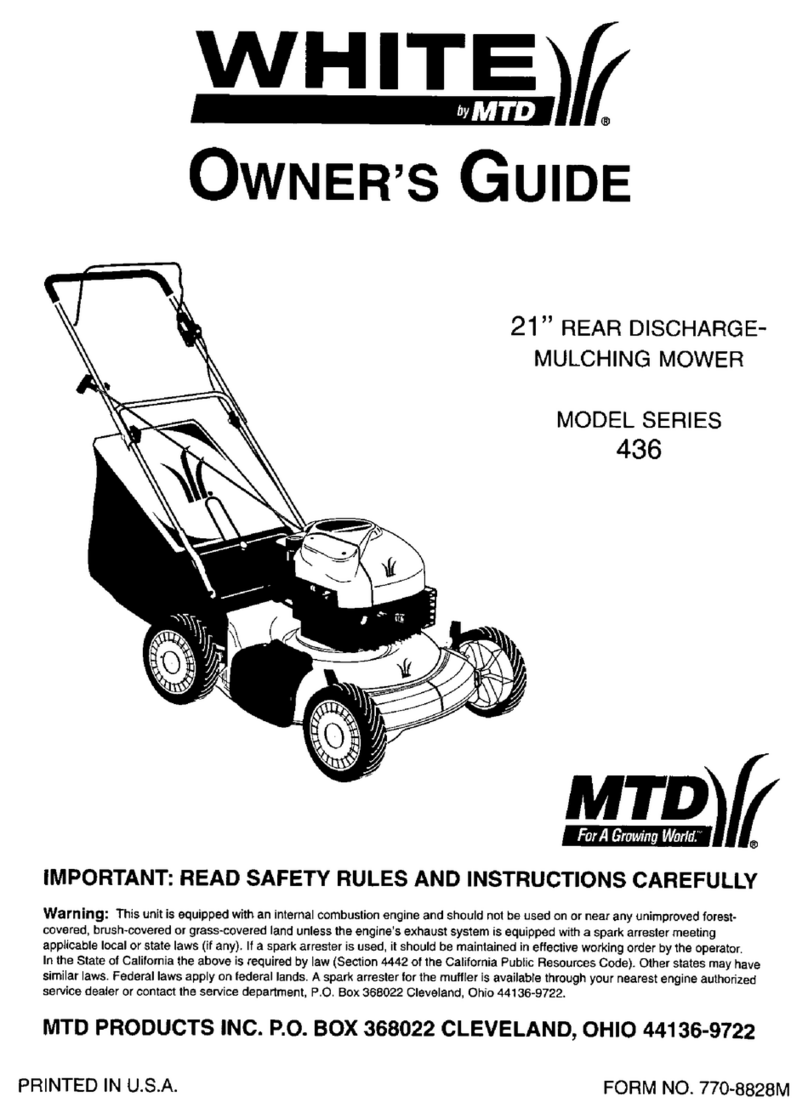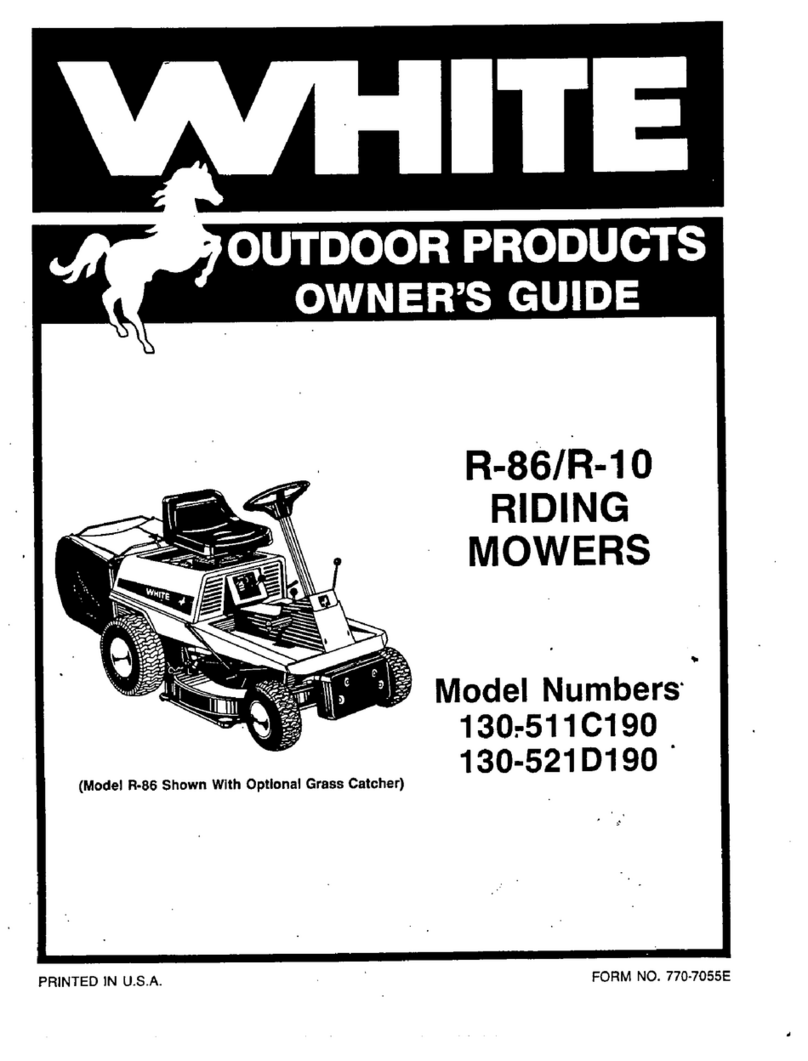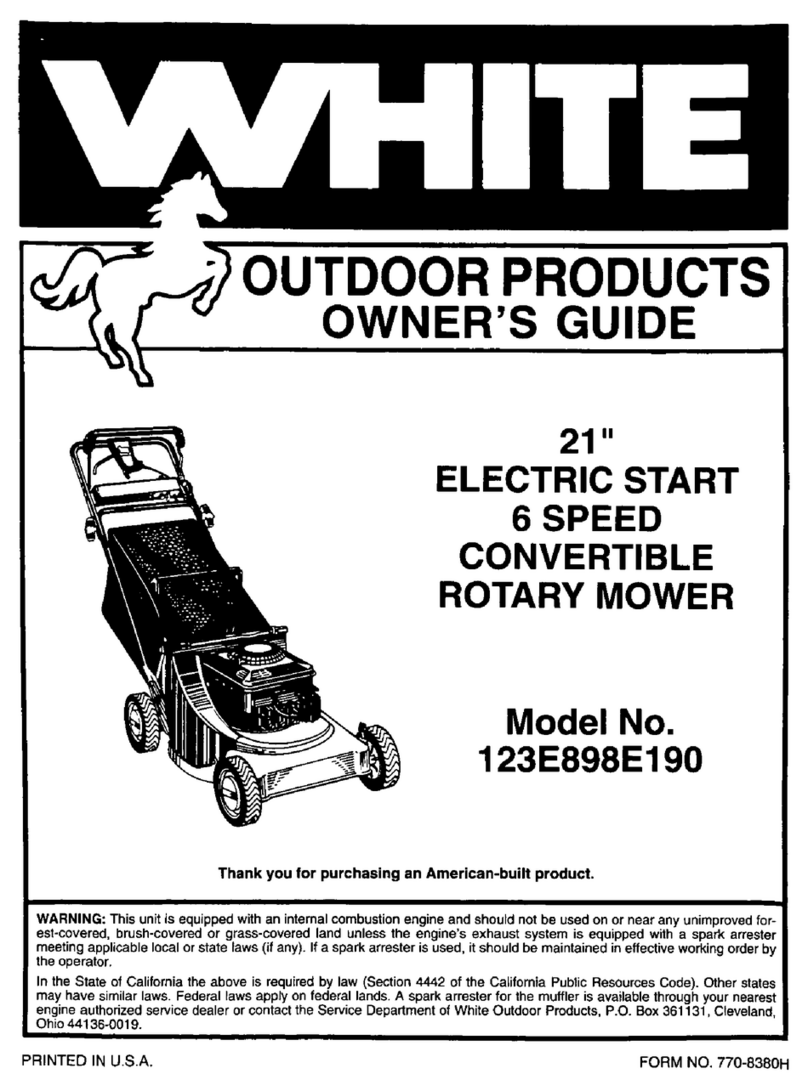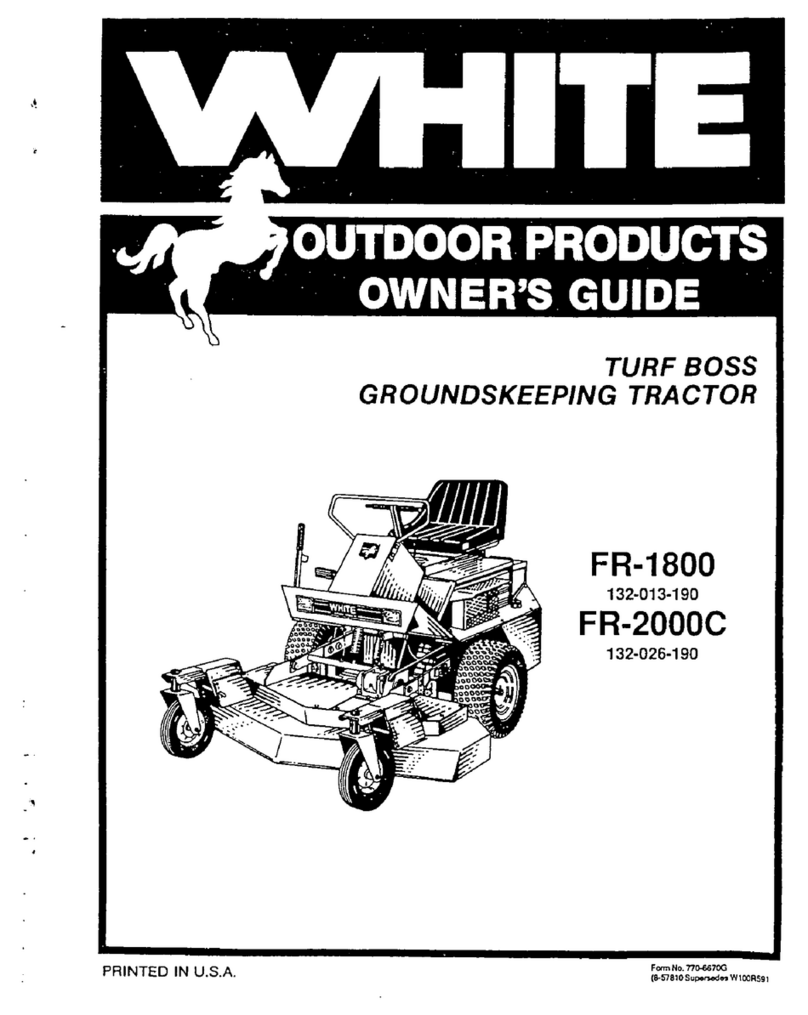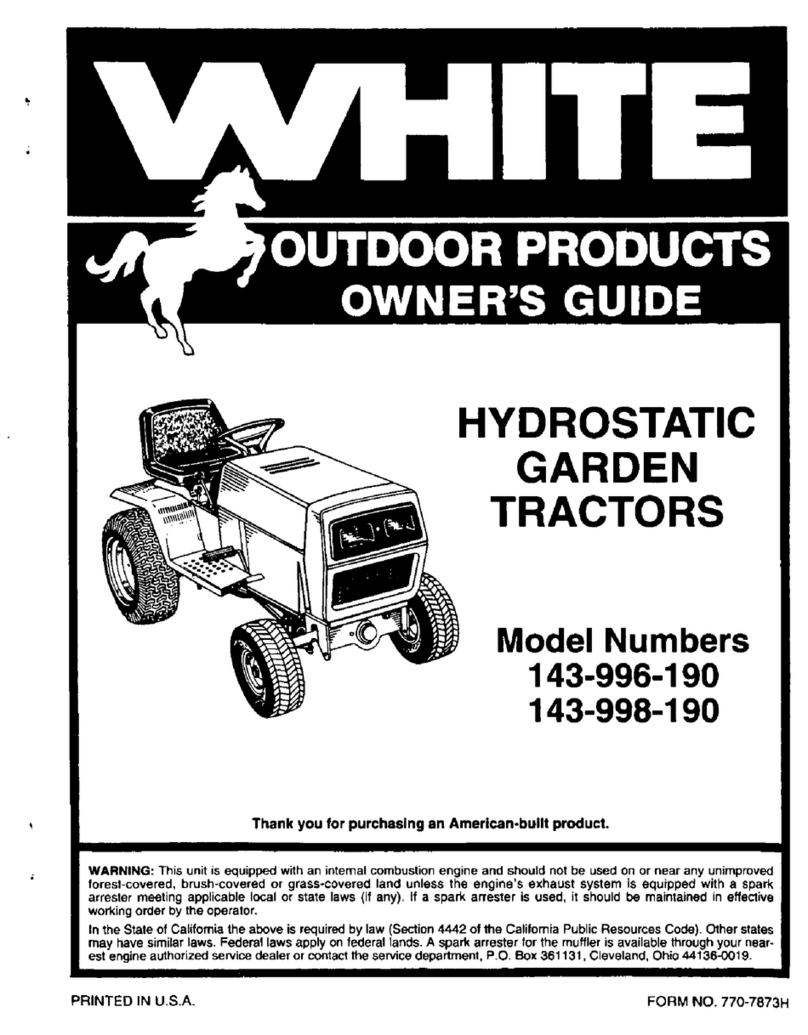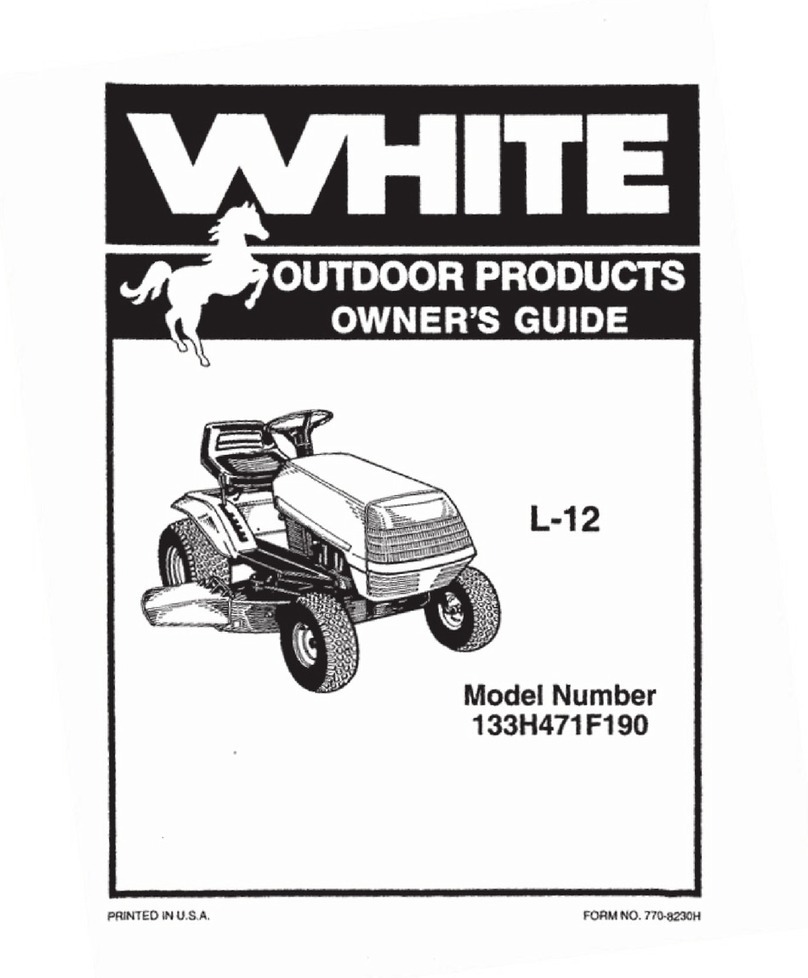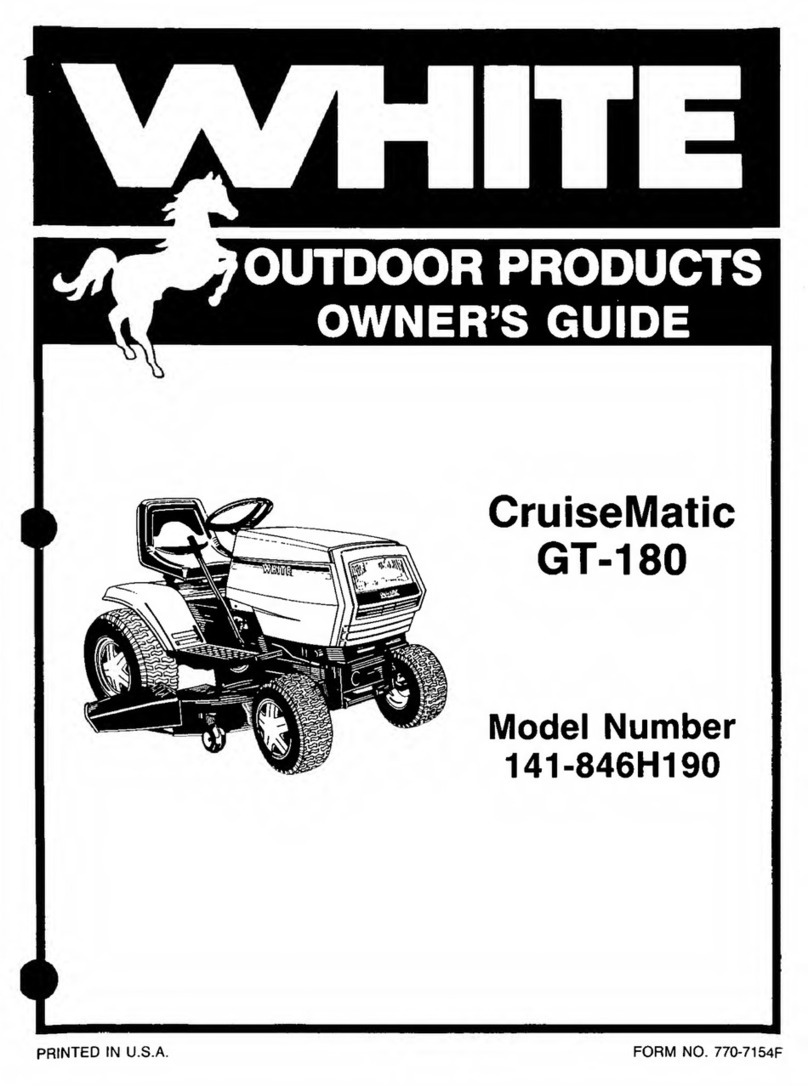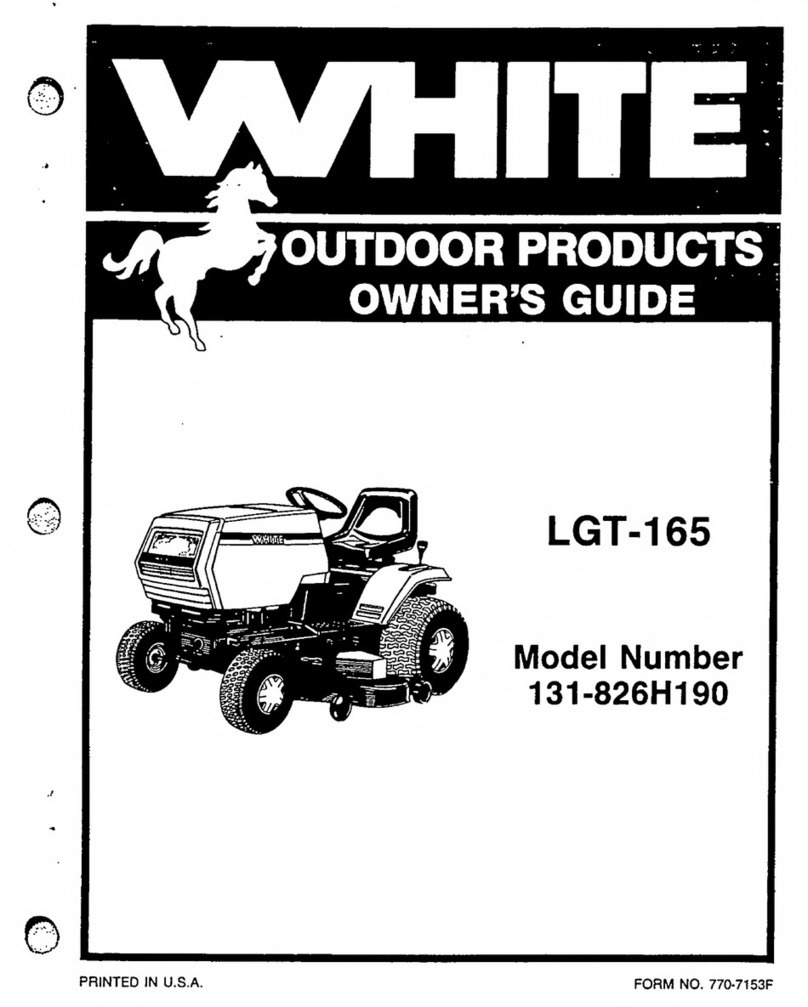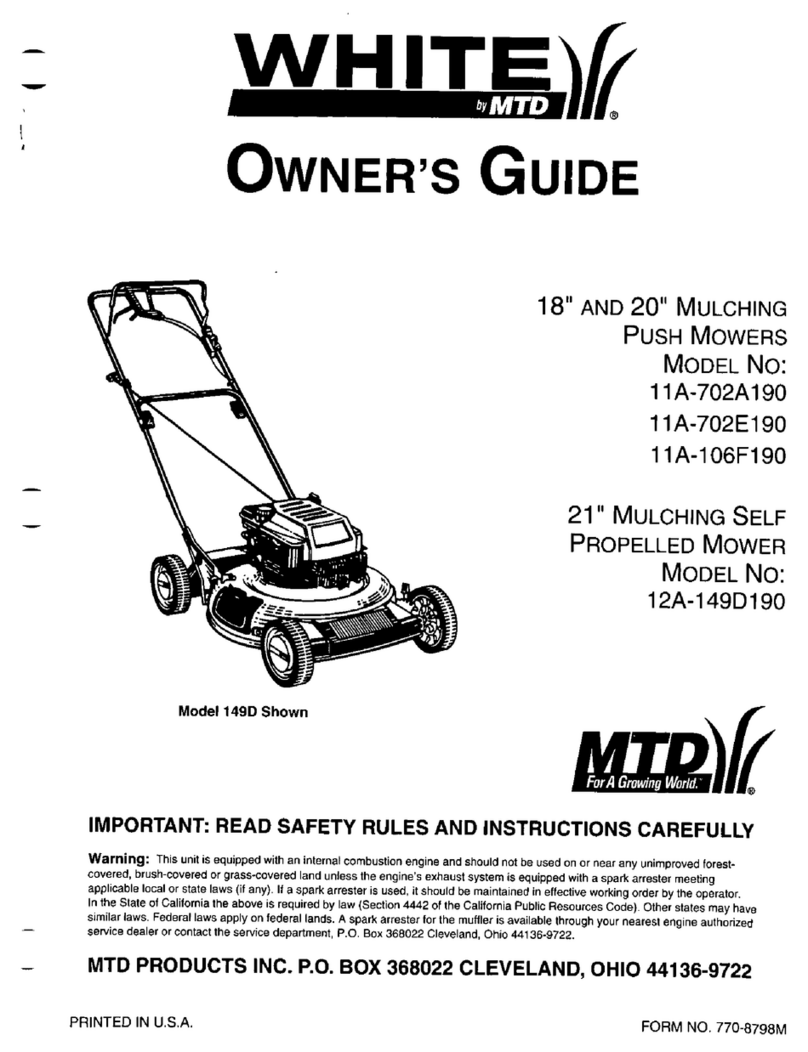
THE
WHITE
OUTDOOR
PRODUCTS
CUSTOMER
CARE
TWO
YEAR
LIMITED
WARRANTY
For
two
years
from
the
date
of
retail
purchase
within
the
United
States
of
America,
its
possessions
and
territories,
White
Outdoor
Products
Company
will,
at
its
option,
repair
or
replace,
for
the
original
pur¬
chaser
free
of
charge,
any
part
or
parts
found
to
be
defective
in
material
or
workmanship.
This
warranty
covers
units
which
have
been
operated
and
main¬
tained
in
accordance
with
the
owner's
instructions
furnished
with
the
unit,
and
which
have
not
been
Normal
wear
pi|tfe^^r
components
there^^ifc/sub-
ject
to
separate
teiilRS
as
noted
below
in
^
’*no
fault,
ninety
day
consuajaet-.warranty"
clause.
C#j^mergisd#^
/'
use
is
subject
to
tbe-^erm
listed
above,
and'^
c<^-
ered
for
a
period
year
from
the
dat^jof
^^'ur-
TWO
YEAR
CONSUMER^lWRttANTY
ON
NORJi^'W
eaR
PARTS
WITH
NINETY
FAULT
PROTECt'i^:
All
normal
wear
part
failftife
will
be
covered'^rt.lhis
product
for
a
period
6^;)^ety/idays,f€gatd1ess
of
cause.
After
ninety
dayfe^t
witniH
the
two
year
warranty
period,
norm^'wear
p^s
failures
will
be
covered
if
causet^
by'd^ectsi
in'il^aterial
or
work¬
manship
or
oth^t^Wj^'onem
normal
we€tr
parts
are
defined'tebarieaei^v.belti^l'
blades,
blade
,>>7
j
adapters,
grass
bags,
fideR;^^jEiS^eelSmnd
se^;;,;C;"'y
How
to
obtain
service:
warranty-^nd^ejis
a^^il-
able,
with
proof
of
purchase,
through^bt^r
T&^.aP%
authorized
service
dealer.
To
locate
the'^eSfej
‘
your
area,
please
check
the
Yellow
Page'^'br'eonf^t-*-'’''
the
customer
service
department
of
White
Outdoor
Products
Company,
PO
Box
361131,
Cleveland,
Ohio,
44
1
3
6-00
1
9
,
phone
(2
1
6
)225-8883.
The
return
of
a
complete
unit
will
not
be
accepted
by
the
factory
unless
prior
written
permission
has
been
extended
by
the
service
department
of
White
Outdoor
Products
Company.
Transportation
Charges:
transportation
charges
for
the
movement
of
any
power
equipment
unit
or
attachment
are
the
responsibility
of
the
purchaser,
Units
Exported
out
of
the
United
States:
White
Outdoor
Products
Company
does
not
extend
any
warranty
for
products
sold
or
exported
outside
of
the
United
States
of
America,
its
possessions
and
territories,
except
those
sold
through
White
Outdoor
Products.
Other
Warranties:
1.
The
engine
or
component
parts
thereof
carry
sep-
a^8l!^vwarKtfUies,;&omvthetf
.Please
warranty
on
thes'e:4ei?tK
,
,
;
'
U
ij;2.
Lo^:0l!tter
pumps,
valves
aad^i^linders
or
;igomp(^^t
parts
thereof
are
c^'si^d
by
a
one
year
w'wan'^;
/
/
,^.3..AlL*ther
warranties,
expr4sS?flV
implied,
includ¬
ing
any
implied
warranty
ofi|ij|«achantability
or
fit-
iigss
for
a
particular
purposbyafe
hereby
expressly
disetain^d
in
their
entiretyl^,
4.
Th,g
provisions
as
set
ffl^^n
this
warranty
pro-
vi^l'.^efiole
and
exclusiv^{^y^medy
of
White
Products
Comp^^i
obligations
arising
f4fi|5i^.4ie
sales
of
its
pro^i^BStS.
White
Outdoor
/^Products
Company
wiUyaai^be
liable
for
incidental
ipr
consequential
loss
(^yd^ttge.
•
■
K
6w1«fe,i8Titffi&tAW'«fiLATES
TO
THIS
WARRANTY:
this
limited
warranty
gives
you
specific
legal
rights,
and
you
may
also
have
other
rights
which
vary
from
state
to
state.
Certain
disclaimers
are
not
allowed
in
some
states
and
therefore
they
may
not
apply
to
you
under
all
circumstances.
Note:
this
warranty
does
not
cover
routine
mainte¬
nance
items
such
as
lubricants,
filters,
blade
sharp¬
ening
and
tune-ups,
or
adjustments
such
as
brake
adjustments.
Nor
does
this
warranty
cover
normal
deterioration
of
the
exterior
finish
due
to
use
or
exposure.
WHITE
OUTDOOR
POWER
